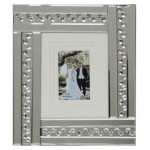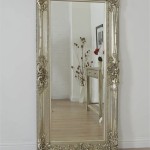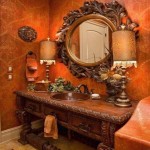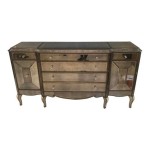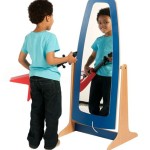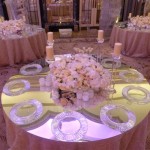Mirror Easel Stands: A Comprehensive Guide
Mirror easel stands are versatile frameworks designed to support mirrors of varying sizes and weights. They provide a stable and aesthetically pleasing method for displaying mirrors in numerous settings, ranging from retail environments and event spaces to homes and art studios. Understanding the different types, features, and appropriate applications of mirror easel stands is essential for selecting the optimal support solution for a given mirror.
The primary function of a mirror easel stand is to provide a secure and upright display for a mirror. This eliminates the need for permanent wall mounting, offering flexibility in placement and relocation. The stability of the stand is paramount, ensuring that the mirror remains safely positioned and prevents accidental tipping or damage. Beyond functionality, the easel stand contributes to the overall presentation of the mirror, often enhancing its aesthetic appeal with its design and finish.
Types of Mirror Easel Stands
The market offers a wide array of mirror easel stands, each designed with specific features and targeted applications in mind. Distinguishing between these types is crucial for making an informed purchasing decision.
A-Frame Easel Stands: This is arguably the most common type. It is characterized by its A-shaped structure, providing inherent stability through its broad base and angled support. A-frame easels are typically made of wood or metal and often feature adjustable height settings to accommodate different mirror sizes. They are suitable for both lightweight and moderately heavy mirrors, making them a popular choice for home decor and retail displays.
Tripod Easel Stands: Tripod easel stands, as the name implies, utilize three legs for support. These legs can be fixed or adjustable in length. Tripod easels offer a sleek and modern aesthetic, often preferred in contemporary settings. While they can be very stable, the distribution of weight is crucial; heavier mirrors may require a tripod with reinforced legs and a wider stance. These are often found in art studios or used for displaying lighter, decorative mirrors.
Folding Easel Stands: These stands are designed for easy storage and portability. They can be collapsed into a compact form, making them ideal for traveling artists, temporary displays, or events where space is limited. Folding easels are generally lighter in weight and therefore best suited for smaller and lighter mirrors. Materials typically include lightweight aluminum or wood.
Studio Easel Stands: Studio easels are the sturdiest and most robust option, designed to support large and heavy mirrors. They are commonly found in professional art studios or dance studios where full-length mirrors are essential. Studio easels often feature a wide base, heavy-duty construction, and adjustable height and tilt mechanisms. The materials used are usually solid wood or heavy gauge metal.
Decorative Easel Stands: These stands prioritize aesthetics over sheer load-bearing capacity. They frequently showcase intricate designs, ornate details, and decorative finishes, complementing the mirror itself. Decorative easels are often used to display smaller, decorative mirrors in living rooms, bedrooms, or entryways, adding a touch of elegance to the space.
Key Considerations When Selecting a Mirror Easel Stand
Choosing the right mirror easel stand involves careful consideration of several factors to ensure both the stability of the mirror and the overall aesthetic compatibility with the surrounding environment.
Mirror Size and Weight: This is the most critical factor. The easel stand must be able to safely support the mirror's weight without any risk of collapse. Always refer to the manufacturer's weight capacity specifications and ensure that the mirror's weight falls well within the recommended limit. Consider the mirror's dimensions as well. A larger mirror will require a wider and more stable base to prevent it from tipping over. For very large or heavy mirrors, a studio easel is generally the most suitable option.
Material and Construction: The material and construction quality directly impact the easel's durability and stability. Wood, metal, and plastic are common materials. Wooden easels offer a classic and warm aesthetic but may be less durable than metal options. Metal easels, particularly those made of steel or aluminum, are exceptionally strong and resistant to wear and tear. Plastic easels are generally less expensive and lighter but may not provide the same level of stability as wood or metal. The method of construction is also important; look for sturdy joints, reinforced connections, and high-quality hardware.
Adjustability: The ability to adjust the height and tilt of the easel is a valuable feature, allowing for optimal viewing angles and accommodating mirrors of different sizes. Adjustable height is particularly useful in retail settings where mirrors may need to be repositioned to suit customer preferences. Tilt adjustments can help to eliminate glare or reflect light in a specific direction. Examine the adjustment mechanisms carefully to ensure they are smooth, secure, and easy to operate.
Stability and Safety: Stability is paramount for preventing accidents and protecting the mirror from damage. Look for easel stands with a wide base and non-slip feet to ensure a secure grip on the floor. Consider the potential for the easel to be bumped or knocked over, especially in high-traffic areas. For added safety, some easels feature locking mechanisms or anchoring points to secure the mirror in place. Children and pets can pose a risk; ensure the stand is appropriately stable and positioned in a location where it is less likely to be disturbed.
Aesthetic Considerations: The easel stand should complement the style and decor of the surrounding environment. Consider the material, finish, and design of the easel and how it will interact with the mirror and the other elements in the room. A sleek and modern easel may be suitable for a contemporary setting, while a more ornate easel might be a better choice for a traditionally styled space. The color of the easel should also be considered; neutral colors like black, white, or silver are versatile and can blend seamlessly with a wide range of decor styles.
Applications of Mirror Easel Stands
Mirror easel stands find widespread application across diverse settings, demonstrating their versatility and adaptability.
Residential Use: In homes, mirror easel stands are used to display decorative mirrors in living rooms, bedrooms, and entryways. They offer a flexible alternative to wall mounting, allowing homeowners to easily reposition mirrors to suit their changing needs and preferences. Full-length mirrors on easel stands are also popular in dressing rooms and bedrooms, providing a convenient and portable solution for personal grooming.
Retail Displays: Retail stores utilize mirror easel stands to showcase clothing, accessories, and other merchandise. Strategically placed mirrors can enhance the shopping experience by allowing customers to see how items look on them. Easel stands offer a versatile and customizable display solution, allowing retailers to easily rearrange their displays to highlight new products or promotions. Portable and folding easels are particularly useful for temporary displays or pop-up shops.
Event Spaces: Mirror easel stands are frequently used in event spaces such as weddings, parties, and conferences. They can serve as decorative elements, adding a touch of elegance and sophistication to the venue. Full-length mirrors on easel stands can also be used in dressing rooms or backstage areas for performers or attendees. The portability of easel stands makes them ideal for events where temporary displays are required.
Art Studios: Art studios rely on mirror easel stands to support large and heavy mirrors used for figure drawing and portraiture. Studio easels provide a stable and adjustable platform for artists to position their mirrors at the optimal angle. The robust construction of studio easels ensures that the mirror remains securely in place, even during prolonged periods of use.
Dance Studios and Gyms: Dance studios and gyms utilize full-length mirrors on easel stands to allow dancers and athletes to monitor their form and technique. These mirrors provide valuable feedback, helping individuals to improve their performance and prevent injuries. The adjustable height and tilt of the easel stands allow for customized positioning to suit the needs of different users.
Ultimately, selecting the appropriate mirror easel stand involves a careful assessment of the mirror's size, weight, and intended use, as well as the aesthetic considerations of the surrounding environment. By considering these factors, users can ensure that they choose a stand that provides both functionality and visual appeal for the intended purpose.
Heavy Duty Easels For Mirrors Etc
Heavy Duty Easels For Mirrors Etc

Konk Namdjou Easel Mirror Solid Walnut Mid Denmark
Heavy Duty Easels For Mirrors Etc
Heavy Duty Easels For Mirrors Etc

Black Picture Easel At Melbourne Mirrors Adjustable Height On
Heavy Duty Easels For Mirrors Etc

Shabby Chic Mirror Easel For Hire Lincolnshire Myweddinghire Com

How To Make A Large Display Easel My Repurposed Life
Heavy Duty Easels For Mirrors Etc
